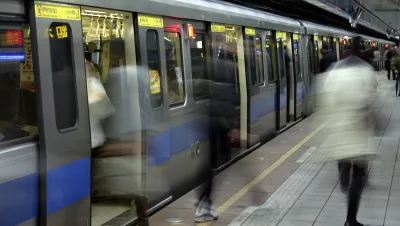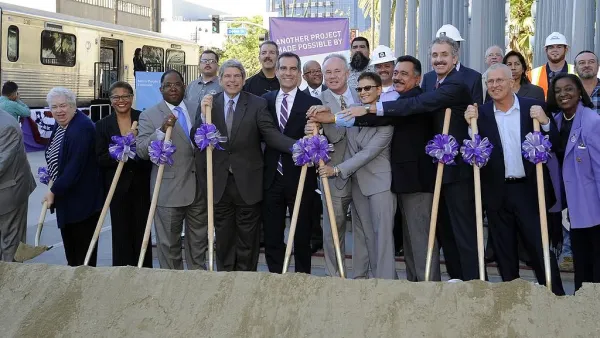Ridership declines mean falling revenues for transit agencies, and could be the beginning of a cycle of service cuts and fare increases leading to yet more ridership declines.

Around the United States, transit ridership is falling. Disappearing bus riders in particular have driven big drops in Miami, Philadelphia, Los Angeles and 31 of 35 large American metro areas. "Researchers concluded factors such as lower fuel costs, increased teleworking, higher car ownership and the rise of alternatives such as Uber and Lyft are pulling people off trains and buses at record levels," Faiz Siddiqui reports for The Washington Post.
The issue isn't merely that ridership is down around the country, but that this drop in ridership may lead to a vicious cycle. "The problem: The declines mean a decrease in farebox recovery, which can often lead to fare increases and reduced service, as in Metro’s case," Siddiqui writes.
"Exceptions to the trend: Seattle, Phoenix and Houston, which either expanded transit coverage and boosted service or underwent ambitious network overhauls, as in Houston’s case," Siddiqui reports. While improving services by reorganizing them or investing in expansions boosted their ridership, it didn't eliminate all the problems associated with cars. "[Seattle], which has some of the worst traffic congestion in the country, hosts about 45,000 Amazon employees and had added 60,000 workers to its center city core since 2010, according to Andrew Glass-Hastings, Director of Transit and Mobility for the Seattle Department of Transportation."
FULL STORY: Falling transit ridership poses an ‘emergency’ for cities, experts fear

National Parks Layoffs Will Cause Communities to Lose Billions
Thousands of essential park workers were laid off this week, just before the busy spring break season.

Retro-silient?: America’s First “Eco-burb,” The Woodlands Turns 50
A master-planned community north of Houston offers lessons on green infrastructure and resilient design, but falls short of its founder’s lofty affordability and walkability goals.

Delivering for America Plan Will Downgrade Mail Service in at Least 49.5 Percent of Zip Codes
Republican and Democrat lawmakers criticize the plan for its disproportionate negative impact on rural communities.

Test News Post 1
This is a summary

Test News Headline 46
Test for the image on the front page.

Balancing Bombs and Butterflies: How the National Guard Protects a Rare Species
The National Guard at Fort Indiantown Gap uses GIS technology and land management strategies to balance military training with conservation efforts, ensuring the survival of the rare eastern regal fritillary butterfly.
Urban Design for Planners 1: Software Tools
This six-course series explores essential urban design concepts using open source software and equips planners with the tools they need to participate fully in the urban design process.
Planning for Universal Design
Learn the tools for implementing Universal Design in planning regulations.
EMC Planning Group, Inc.
Planetizen
Planetizen
Mpact (formerly Rail~Volution)
Great Falls Development Authority, Inc.
HUDs Office of Policy Development and Research
NYU Wagner Graduate School of Public Service



























